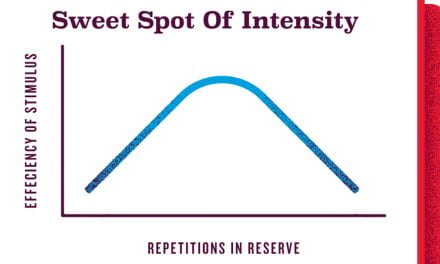As a society we focus too much on how much a person weighs – and the perception is, the more you weigh,  the less healthy you are. Is this true? It should be obvious, but as a culture obsessed with appearance, we forget what appears healthy on the outside may be very toxic or sick on the inside. New research points to just how dangerous assuming thinness is healthy can be — you can be skinny fat!
the less healthy you are. Is this true? It should be obvious, but as a culture obsessed with appearance, we forget what appears healthy on the outside may be very toxic or sick on the inside. New research points to just how dangerous assuming thinness is healthy can be — you can be skinny fat!
The medical term for this is “MONW,” or metabolically obese normal weight. It means you appear light, but are internally overfat – not enough muscle and too much fat, especially belly fat. More recently, a 2014 report on people with MONW—found that they have a significantly higher risk of metabolic problems and death from these diseases than any other group.
“I see these people all the time,” says Dr. Daniel Neides, medical director at Cleveland Clinic Wellness Institute. “On the outside they look incredibly healthy, but on the inside they’re a wreck.” You likely know someone who’s skinny fat. They never eat vegetables, love steak, and haven’t exercised since eighth grade gym class—and yet they’re still thin. But while some of us are envious of our svelte peers who don’t count calories or think twice about having a donut for breakfast, doctors say we shouldn’t be. Skinny fat is a real, and remarkably common, phenomenon—and it can be deadly. The shocking news from a study published in the Journal of the American Medical Association is that nearly 1 in 4 thin-appearing people have pre-diabetes and are “metabolically obese”.
Rates of type 2 diabetes have increased markedly since 1960. As of 2010 there were approximately 285 million people diagnosed with the disease compared to around 20 million in 1985. Long term complications from high blood sugar can include heart disease, stroke, diabetic retinopathy, and kidney failure, which may require dialysis and poor blood flow in the limbs. These latest facts are alarming because those of us who think we get a pass because we appear thin, need to take a second look at our health.
An example from Mark Hyman, MD:
Jim came in for a “wellness check up” and felt happy about his weight. His BMI (or body mass index) was 22 (normal is 18 to 24.) He never seemed to gain weight and felt he could “tolerate” a diet that included lots of bread, pasta, and sugar. He liked his two sodas a day and a few glasses of wine at night. He walked but didn’t do much vigorous exercise or weight training.
Upon looking under the hood we found he had a blood sugar of 117 mg/dl (pre-diabetes), triglycerides of 350 mg/dl, and an HDL of 35 mg/dl. His blood pressure was 148/96 mmHg (normal is less than 110/75 mmHg). And when we measured his insulin levels after taking a sugar drink, they were sky high. Insulin is the real culprit here — the fat storage hormone. It stores belly fat and leads to hormonal and metabolic changes that cause muscle loss and inflammation, furthering the vicious cycle of pre-diabetes or type 2 diabetes – whether you are underweight or overfat.
He was shocked to find out he had severe pre-diabetes and was a ticking time bomb for a heart attack, stroke, cancer, and dementia. Jim was treated exactly the same way as patients with type 2 diabetes.
What can you do to prevent chronic disease?
It is quite simple actually.
- Eat a Low-Glycemic Load Diet– Lean animal protein (chicken, fish, and eggs), nuts, seeds, beans, vegetables, fruit, and small amounts of non-gluten grains.
- Power Up with Protein– Start the day with protein and at each meal. This makes your metabolism run hotter and cuts hunger. Incorporate eggs, protein shakes, nuts, seeds, chicken, or fish.
- Don’t Drink Your Calories– No sodas, juices, sweetened drinks and no more than 3-4 glasses of wine or alcohol a week with meals.
- Reduce White Powder or Flour– Including gluten-free flour products.
- Beware of Frankenfood– Factory-made foods are often science projects with fake ingredients including MSG (which causes ravenous hunger and is hidden as “natural flavoring”), high fructose corn syrup, artificial colors, preservatives, and chemicals.
- Eat From the Right Plant– If it was made in a plant, stay away, if it was grown on a plant it is probably okay.
- Get Going and Get Strong– Both cardio and strength training are key. Cardio builds fitness and improves metabolism, and strength training builds muscle so you won’t be a skinny fat person.
- Protect Sleep Time– Sleep deprivation alters metabolism and increases cravings for carbs and sugar. Sleep is sacred. Make your bedroom a sleeping temple and stay there for 7 to 8 hours a night.
If you need help not being Skinny Fat in the gym, try working with a Personal Trainer, or signing up for a Fitness Program or Aquatic Class.
Sources
http://time.com/14407/the-hidden-dangers-of-skinny-fat/
http://www.huffingtonpost.com/dr-mark-hyman/skinny-fat_b_1799797.html
Eisenberg, Mark J.; Renée Atallah; Sonia M. Grandi; Sarah B. Windle; Elliot M. Berry (Sep 20, 2011). “Legislative approaches to tackling the obesity epidemic.”. CMA Journal 183 (13): 1496–500. doi:10.1503/cmaj.101522. PMC 3176842. PMID 21540168. Retrieved 9 June 2012.
“Body mass index, overweight or obese, self-reported, adult, by age group and sex (Number of persons)“. www.statcan.gc.ca. Retrieved 2015-10-07.
Lauren Streib (February 8, 2007). Forbes “World’s Fattest Countries” Check |url= scheme (help). Forbes. Retrieved 2009-02-12.
Lau DC, Douketis JD, Morrison KM, Hramiak IM, Sharma AM, Ur E (April 2007). “2006 Canadian clinical practice guidelines on the management and prevention of obesity in adults and children [summary]”. CMAJ 176 (8): S1–13. doi:10.1503/cmaj.061409. PMC 1839777.PMID 17420481.
Shields, Margot; Shields, Margot; Tjepkema, Michael (August 2006). “Regional differences in obesity” (PDF). Statistics Canada. Retrieved 2009-02-12.
“The Obesity Epidemic in Canada, July 15, 2005”.



